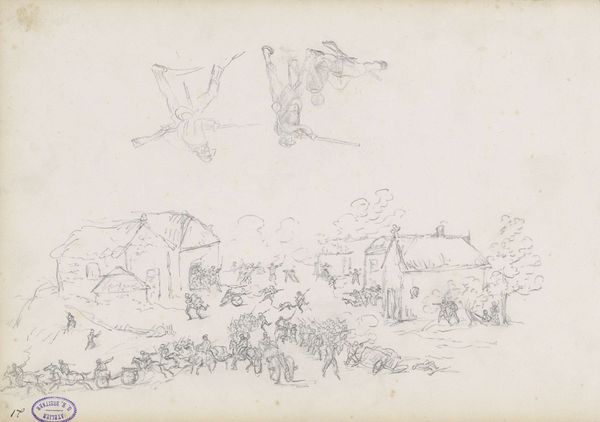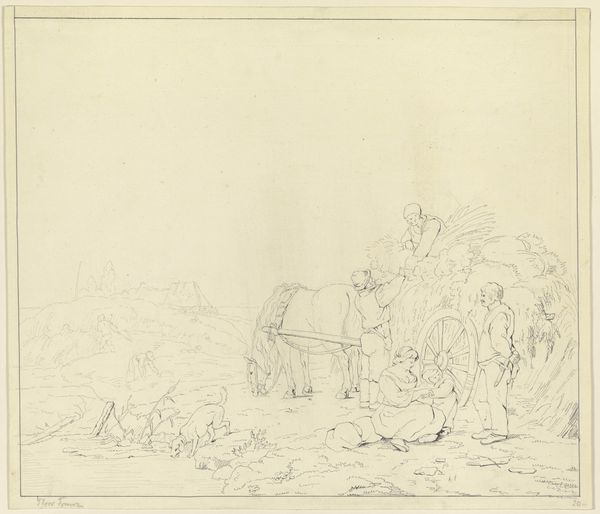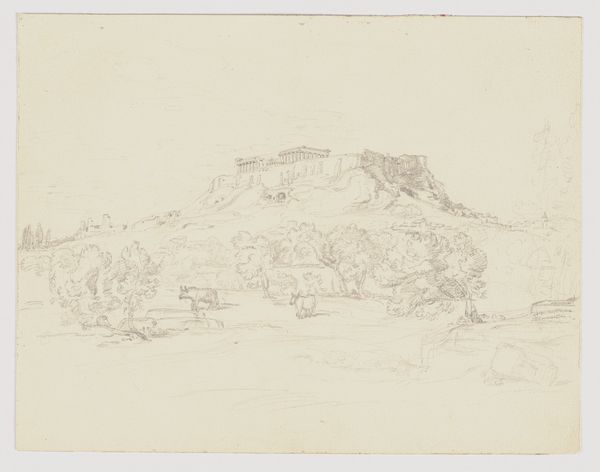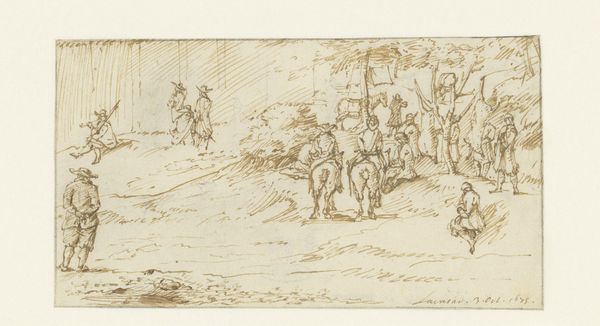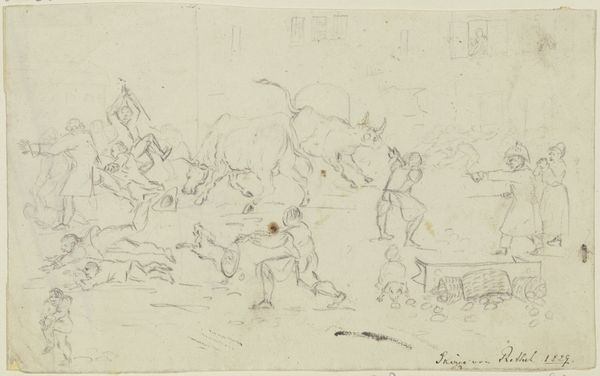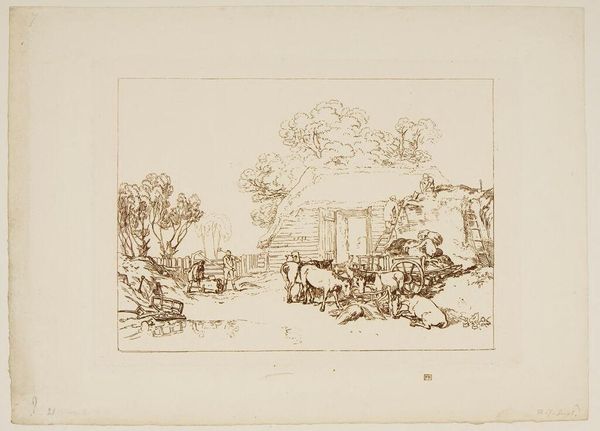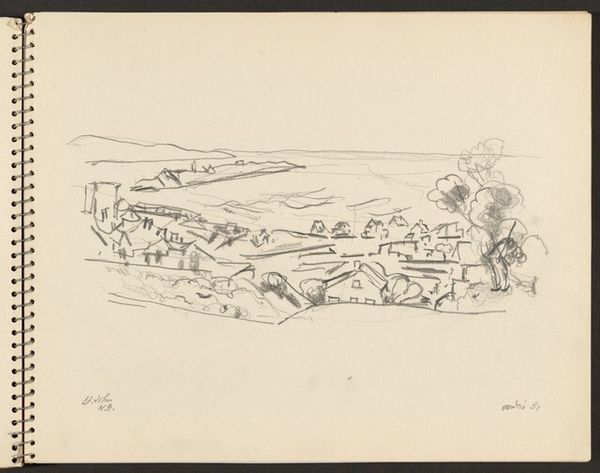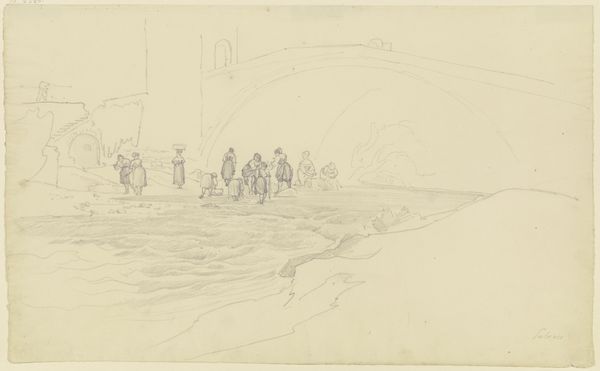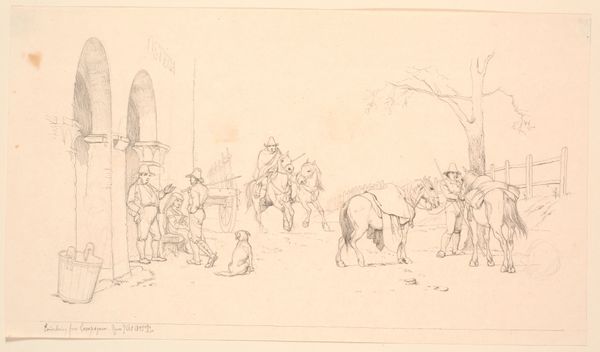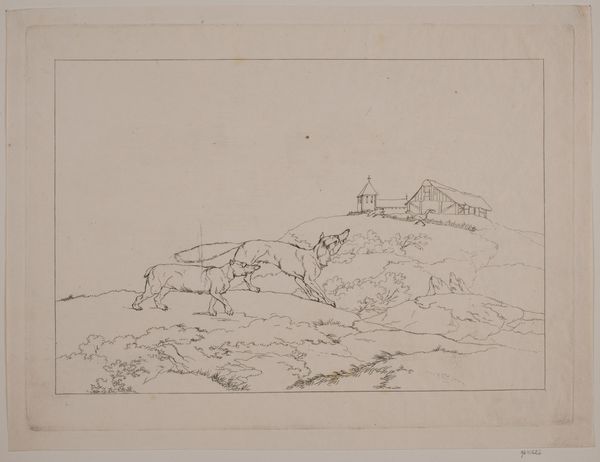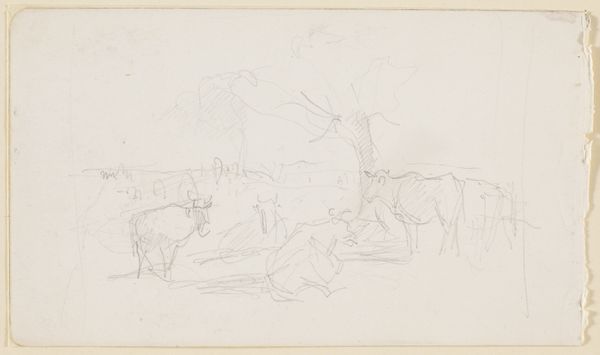
drawing, print, ink, engraving
#
drawing
# print
#
landscape
#
ink
#
genre-painting
#
engraving
Dimensions: 298 mm (height) x 220 mm (width) (plademaal)
Curator: Here we have "Et Kvægmarked," or "A Cattle Market," created in 1831 by Christian David Gebauer. It's a striking engraving rendered in ink. Editor: It’s remarkably detailed, almost dreamlike. I immediately sense a bustling yet strangely serene atmosphere, like observing a distant, well-organized chaos. Curator: Considering Gebauer's penchant for depicting everyday life, I find the choice of the cattle market intriguing. These markets were the economic hubs of their time; the exchange of livestock fueled livelihoods. Examining the paper and ink used offers insight into the production process, doesn’t it? Editor: Absolutely. And look closer – the dog, the placement of the animals… there's a deeper narrative. Dogs often represent fidelity and labour, integral aspects of rural existence. This careful positioning serves as a metaphor for order in what could easily become a chaotic scene. The tent in the background – it signifies transient economies and gatherings. Curator: Right, the tent is vital! It serves not only as shelter for traders but as a signifier of commerce in the pre-industrial landscape. Notice how Gebauer captures texture with the cross-hatching, particularly on the animals and within the tent's folds. That level of skill shaped its initial value and desirability as both art and commodity. Editor: Beyond the skill, it invites a sense of longing for simpler times, perhaps even a yearning for a life attuned to natural rhythms. Even now, centuries later, cattle as a symbol signifies abundance. Its presence here reflects an era defined by animal labour and rural commerce, yes, but speaks still to the basic needs of people. Curator: Agreed. Gebauer's rendering provides a window into production, distribution, and the labour-intensive processes defining that era. It underscores how essential these livestock markets were, highlighting human interaction with animal life, shaped by regional economies. Editor: Yes. And by delving deeper into the symbology we discern, a longing persists; the image stirs profound connection. The enduring relevance lies not merely in Gebauer’s choice of subject, but its layered representations of fundamental needs met within social infrastructures – the core that remains in our memory of ourselves.
Comments
No comments
Be the first to comment and join the conversation on the ultimate creative platform.

